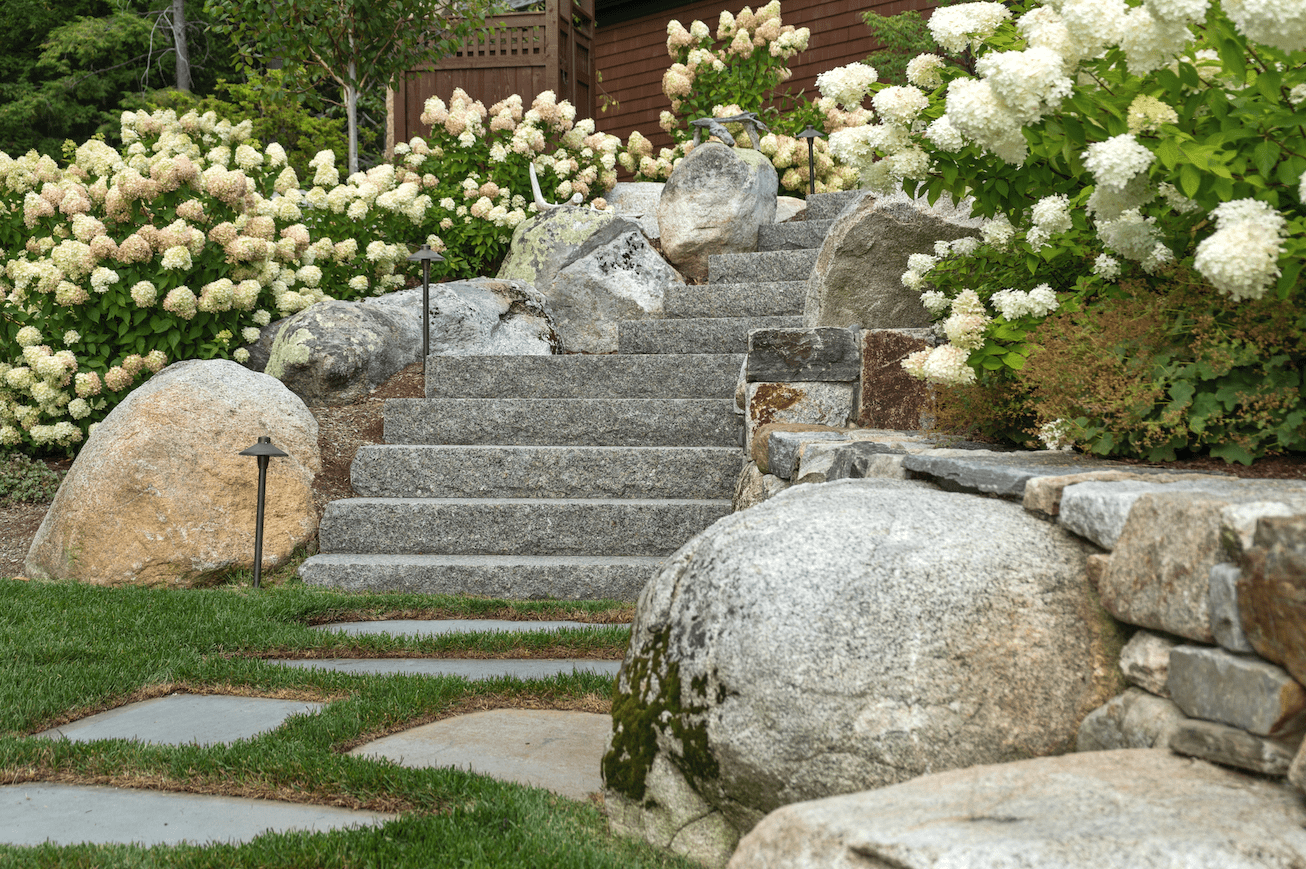When winter gives way and spring is on the horizon, many of our thoughts turn to our gardens, lawns, and planning what to plant in the coming year. But, from a landscaping perspective, fall is a much better time to plant anything but annuals or plants too delicate to survive our cold winters.
It may seem strange to plant when the usual growing season is winding down, but by planting in the fall, you’re giving your plants a better chance of survival. Then in the spring when your plants start to grow, you’ll be ahead of the game and your landscaping will look great in a shorter period of time.
Why plant in the fall?
When plants grow in the summer, many factors—hot temperatures, varying humidity levels, drought, or occasional periods of heavy rain—tend to add stress to plants. In the fall, the soil is still warm enough to nourish growing plants, and the more moderate temperatures and increased rain will give your plantings a healthy, stress-free start.
The cooler air temperatures in the fall mean that the plants will not waste a lot of their energy growing upward. Instead, they will focus their energy downward, establishing strong root systems before going dormant in cold weather. When spring arrives, your plants will already have a strong foundation from which to grow, making them hardier for the growing season, and giving them a better chance for survival.
As you’ve watched over your lawn and gardens through the summer, you’ve undoubtedly lost some plants or found some trouble spots. Autumn is a great time to work on those problem areas.
It’s also the perfect time to add shrubs and trees specifically for winter interest, and add a bit of color to our usually stark and colorless landscape. Trees like basswood/linden and spruce trees prefer to be planted in the fall and do really well in cold weather. A hawthorn tree will produce beautiful white flowers in the spring, and by planting a maple tree, you’ll get beautiful colors on the leaves next autumn. The Japanese maple, a garden favorite, does best when planted in the fall. Really, most any tree or shrub that will grow in our New England environment can be planted in the fall, and these trees prefer to have the extra time to root themselves deeply before the summer growing season.
As for personal comfort level, planting in the fall is a bit more pleasant as the cooler temperatures make it easier to work outside on your property without the bright sun and high humidity of summer months. An added bonus to working in the garden in the fall is that fewer weeds will grow, and there will be fewer insects and pests to deal with.
Planning for Spring Beauty
There are a great variety of things you can plant now to give you early pops of color in your spring yard. Plants like tulips and hyacinths need cold temperatures before they will bloom; crocuses, winter heath, and snowdrops will bloom through the snow. Lilly of the valley and bleeding hearts will add early color to your garden, as will peonies, pansies, and violets. If deer are a problem, consider planting things that deer do not like to nibble on, like grape hyacinths, daffodils, or anything from the allium family.
If you’d like to add a bit of greenery to your landscape, select a cold-season turf to help the bare or brown spots in your lawn, or add trees and shrubs to your property for added interest.
Plan to get all plantings in the ground about six weeks before the usual date of first frost, and mulch your plants before the nights get too cool, which will protect your plants even further. And all your landscaping needs a good fertilizing this time of year to get it ready for winter, so be sure to add a little extra to your new plants for some TLC.

Extending the Season
If you are not quite ready for the growing season to be over, there are some plants you can plant in the fall that will be ready to harvest until the winter, and even through the cold months. (Just make sure to plant them six weeks before the first frost.) Some cold tolerant plants that can be grown in our zone include:
- Lettuce (it can grow after a little snow or frost)
- Broccoli
- Cauliflower
- Spinach
- Carrots
- Cilantro
- Turnips
- Peas
- Radishes
- Kale (will grow all through the winter)
Let us help you prepare your landscaping for fall and the growing seasons beyond. Give us a call at 603.707.0630 or email and we’ll work with you to come up with a plan to get ready for spring and beyond.

